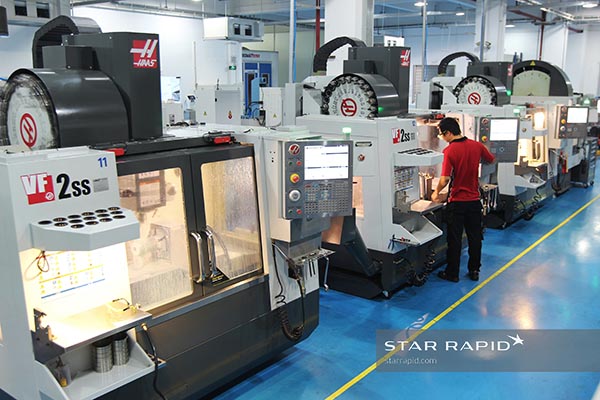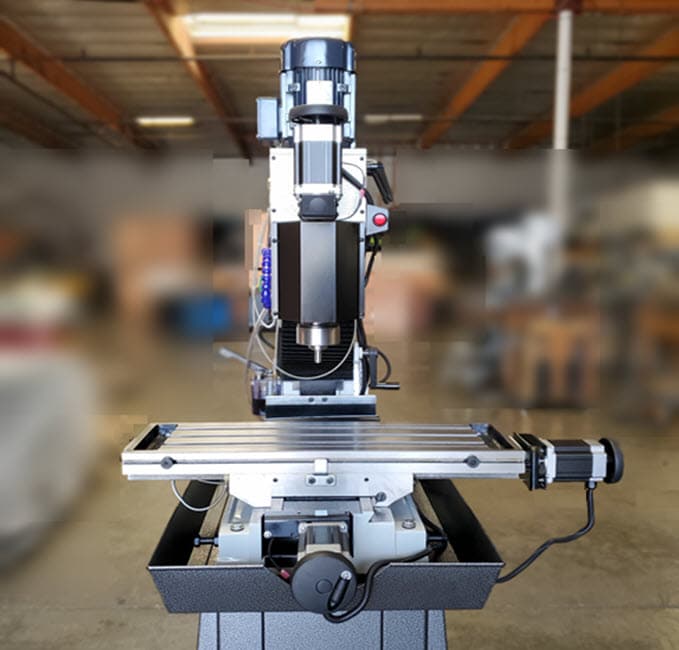Table of Contents
Paragraph 1:
Are you looking to learn how to program a radius on a CNC mill? Look no further! This guide will provide you with step-by-step instructions on how to program a radius, complete with helpful tips and tricks to make the process as smooth as possible.
Paragraph 2:
Whether you’re a seasoned CNC machinist or just starting out, programming a radius can be a daunting task. But with the right guidance and techniques, you can master this skill and improve your machining capabilities. So, let’s dive in and learn how to program a radius on a CNC mill!
- Enter the radius value into the G-code program.
- Use the G02 or G03 code for clockwise or counterclockwise rotation, respectively.
- Add the X, Y, and Z coordinates to indicate the starting point and the center point of the arc.
- Specify the feed rate and spindle speed.
- Execute the program and monitor the machine for accuracy.
How to Program a Radius on a CNC Mill?
If you are a CNC machinist, you know that programming a radius on a CNC mill is a crucial aspect of your work. But, if you are new to the field, this task can be daunting. In this article, we will walk you through the process of programming a radius on a CNC mill in easy-to-understand steps.
1. Understanding the Basics of Radius Programming
To begin with, you must know what a radius is in the context of CNC milling. A radius is a curved edge on a workpiece that can be created using a CNC mill. In order to program a radius, you need to understand the basic syntax of G-code programming language.
G-code is a language used to control CNC machines. It consists of a series of commands that tell the machine what to do. In order to program a radius, you need to use the G02 and G03 commands.
2. G02 and G03 Commands
The G02 and G03 commands are used to create a clockwise or counterclockwise arc, respectively. The G02 command creates a clockwise arc, while the G03 command creates a counterclockwise arc. These commands are followed by parameters that specify the location and size of the arc.
3. Setting Up the Machine
Before programming a radius, you need to make sure that the machine is set up correctly. This includes selecting the appropriate cutting tool, setting the spindle speed and feed rate, and positioning the workpiece.
4. Calculating the Radius
To program a radius, you need to know the size of the arc you want to create. This can be calculated using a simple formula:
Radius = (Length of Arc) / (2 x Pi)
Once you have calculated the radius, you can program it into the machine using the G02 or G03 commands.
5. Programming the Radius
To program a radius, you need to specify the starting point, the center point, and the ending point of the arc. You can do this by using the X, Y, and Z coordinates.
For example, to program a clockwise arc with a radius of 1 inch, you would use the following command:
G02 X5 Y5 I1 J0
This command tells the machine to move in a clockwise arc with a radius of 1 inch, starting at the point (5,5) and ending at the point (6,5).
6. Using Radius Compensation
Radius compensation is a feature that allows you to program a radius without having to calculate the center point. This feature is especially useful when working with complex shapes.
To use radius compensation, you need to specify the radius and the direction of the arc. The machine will automatically calculate the center point and create the arc.
7. Benefits of Programming a Radius
Programming a radius on a CNC mill has several benefits. It allows you to create curved edges and shapes that would be difficult or impossible to create with a straight cutting tool. It also saves time and reduces the risk of errors, as the machine can create precise arcs automatically.
8. Vs Straight Cutting Tools
Using a straight cutting tool to create a curved edge can be time-consuming and risky. It can also lead to uneven edges and imprecise shapes. Programming a radius on a CNC mill eliminates these issues and allows you to create precise curves and shapes quickly and easily.
9. Tips for Programming a Radius
When programming a radius on a CNC mill, it is important to keep a few tips in mind. First, always double-check your calculations and program before running the machine. Second, use the appropriate cutting tool for the job. Third, make sure the machine is properly lubricated and maintained to ensure smooth operation.
10. Conclusion
Programming a radius on a CNC mill can seem intimidating, but it is a necessary skill for any CNC machinist. By understanding the basic syntax of G-code programming language and following the steps outlined in this article, you can program precise and complex curved edges and shapes easily and efficiently.
Frequently Asked Questions
Learning how to program a radius on a CNC mill can be a daunting task, especially for beginners. However, with some basic knowledge and practice, anyone can master this skill. Here are some frequently asked questions and answers about how to program a radius on a CNC mill.
What is a radius on a CNC mill?
A radius is a curved surface that is commonly used in machining. It is the distance from the center of a circle to its edge. In CNC milling, a radius is typically created using a milling cutter with a rounded profile. The size and shape of the radius can be programmed into the CNC machine to create precise, consistent curves in a workpiece.
To program a radius on a CNC mill, you need to have a basic understanding of G-code programming language. This is a standardized coding language used to control CNC machines. You will also need to know the specific commands and parameters used to program a radius, such as G02 and G03 for clockwise and counterclockwise movements, respectively.
How do I program a radius on a CNC mill?
Programming a radius on a CNC mill involves several steps. First, you need to determine the size and shape of the radius you want to create. This can be done using CAD software or by manually measuring the workpiece. Next, you need to write the G-code program that will tell the CNC machine how to create the radius. This will involve specifying the starting point, the direction of the cut, and the size and shape of the radius itself.
Once the program is written, you will need to test it on a scrap piece of material to ensure that the radius is being created correctly. If there are any errors or issues, you will need to adjust the program accordingly. With practice and experience, you will become more proficient at programming radii on a CNC mill.
What are some tips for programming a radius on a CNC mill?
There are several tips that can help you program a radius on a CNC mill more effectively. First, it is important to have a clear understanding of the geometry of the radius you want to create. This will help you choose the right cutters and programming parameters for the job. Additionally, it is important to use the correct feed rates and spindle speeds to ensure that the cutter is operating at optimal efficiency.
Another tip is to carefully monitor the cutting process as it is happening. This will allow you to quickly identify any issues or errors that may be occurring, and make adjustments on the fly if necessary. Finally, it is important to practice programming radii on a regular basis to build up your skills and confidence in this area.
What are some common mistakes to avoid when programming a radius on a CNC mill?
There are several common mistakes that can occur when programming a radius on a CNC mill. One of the most common is using the wrong cutter or programming parameters for the job. This can result in a poorly formed radius, or even damage to the workpiece or cutter itself.
Another mistake is failing to properly test the program before running it on the actual workpiece. This can lead to costly errors and wasted material. Finally, it is important to be patient and take the time to carefully plan and execute the programming process. Rushing or taking shortcuts can lead to mistakes and sub-optimal results.
How can I improve my skills in programming radii on a CNC mill?
Improving your skills in programming radii on a CNC mill takes time and practice. One of the best ways to improve is to work on a variety of different projects that require radii of different sizes and shapes. This will help you become more familiar with the programming commands and parameters used to create different types of radii.
Another way to improve is to seek out training or mentorship from more experienced CNC programmers. They can offer guidance and feedback on your programming techniques, and help you identify areas for improvement. Additionally, it is important to stay up to date on the latest developments in CNC technology and programming best practices, through training courses, industry events, and online resources.
In conclusion, programming a radius on a CNC mill may seem daunting at first, but with the right approach, it can be a straightforward process. By understanding the basics of G-code and the functions of your machine’s controller, you can create accurate and precise radius cuts with ease.
Remember to take your time and double-check your code before running your program. Small mistakes can lead to big problems, so it’s important to be diligent and thorough in your programming. Additionally, don’t be afraid to experiment and try new techniques to achieve the desired results.
Ultimately, programming a radius on a CNC mill is an essential skill for any machinist or CNC operator. With practice and persistence, you can master this technique and unlock new possibilities for your machining projects. So don’t give up, keep learning, and happy machining!
Request a quote today!
[contact-form-7 id="1578" title="Contact form"]
Please compress the file into a ZIP or RAR file before uploading. Alternatively, send through your RFQ by email.
enquires@unitymanufacture.com





